|
Displaying items by tag: architect
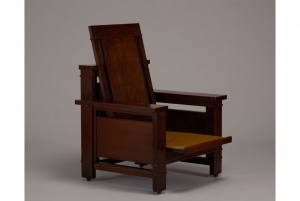
A rare and early reclining armchair designed by American architect Frank Lloyd Wright (1867-1959) is currently on view at the Currier Museum in Manchester, NH. A pioneer of modern architecture, Wright designed the chair between 1902 and 1903 and it features the minimal aesthetic and linear design that he is best known for. The chair was originally designed for his prairie style Francis W. Little House in Peoria, IL but he used different variations of the chair over the course of the next decade, including in his own studio in Chicago’s Oak Park.
The presentation of the chair coincides with the reopening of the Currier’s Isadore J. and Lucille Zimmerman House (1950), which Wright designed. Along with the exterior, Wright devised the House’s interiors, furniture, gardens, and even its mailbox. The Zimmermans left the house to the Currier in 1988 and it opened for public tours in 1990. Besides being able to view a Wright masterpiece, visitors are offered a glimpse of the Zimmermans’ personal collection of modern art, pottery, and sculpture. The Zimmerman House is the only Wright home open to the public in New England. It was listed in the National Register of Historic Places in 1979.
Tours of the Zimmerman House are offered ten times a week and require a reservation.
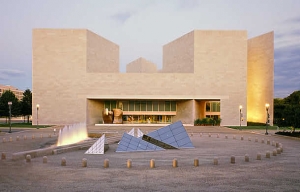
Officials at the National Gallery of Art in Washington, D.C. announced that the museum’s East Building will undergo a $30 million renovation, adding over 12,260-square-feet of exhibition space and a rooftop sculpture garden to the structure. Designed by famed architect I.M. Pei (b. 1917) and opened in 1978, the East Building houses the museum’s collection of modern paintings, drawings, sculptures, and prints as well as study and research centers and offices.
The East Building galleries will gradually close beginning in July and ending in December 2013; they will remain shuttered for approximately three years once renovations begin in January 2014. The project will create two sky-lit Tower Galleries within the East Building, which will be adjoined by an outdoor sculpture terrace. The East Building will continue to house the museum’s modern art collection and may see the addition of a room dedicated to the work of Mark Rothko (1903-1970). Museum officials hope that the additional exhibition space will inspire future donations to the National Gallery’s permanent collection.
The East Building project is part a Master Facilities Plan, which started in the museum’s West Building in 1999 and involved bolstering the building’s infrastructure and renovating its main floor and sculpture galleries. A number of established Washington-based philanthropists are donating $30 million for the East Building project; it is one of the largest gifts the museum has received from private donors in a decade.

Officials at Harvard University in Cambridge, MA announced that they will open the newly renovated and expanded Harvard Art Museums in the fall of 2014. The project, which began in 2008, has entailed a complete reinvention of Harvard’s museum system and will place the Busch-Reisinger Museum, the Arthur M. Sackler Museum, and the Fogg Museum of Art under one state-of-the-art roof.
Renowned architect Renzo Piano was enlisted to transform 32 Quincy Street, the landmark building that currently houses the Fogg and Busch-Reisinger museums, into Harvard’s artistic hub. The new facility will combine the 32 Quincy Street building, which was constructed in 1927, with a new addition and a striking glass rooftop structure that will allow controlled natural light into the facility’s conservation lab, study centers, and galleries. The overhaul also includes a theater for lectures and public programming.
The Arthur M. Sackler Museum, which was established in 1985 in a separate building from the Fogg and Busch-Reisinger, has remained open during the recent construction. The Sackler will close June 1, 2013 to prepare for the relocation of its remarkable Asian art collection to 32 Quincy Street.
The Bush-Reisinger Museum, which was founded in 1903, is the only museum in North America dedicated to the art from the German-speaking countries of Central and Northern Europe. The Fogg Art Museum, which opened to the public in 1896, boasts extensive holdings of American and European art from the Middle Ages to the present.
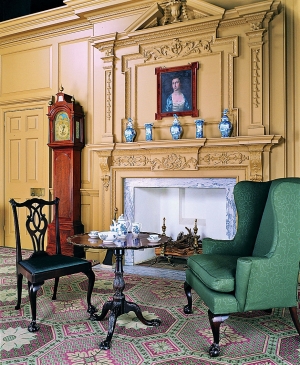
A Grand Tour: Trade Winds of Influence
16th Annual Charleston Art & Antiques Forum
March 13–17, 2013
Old Courtroom, 23 Chalmers Street, Charleston, S.C.
For information visit www.CharlestonAntiquesForum.org or call 800.926.2520
The forum will bring together an impressive group of speakers from the US and Europe who will demonstrate the influence of the Grand Tours of the seventeenth through nineteenth centuries on the architecture, furniture, silver, art, and gardens of Americans and Europeans alike. Dame Rosalind Savill, Director Emeritus of the Wallace Collection, London, England, will deliver the keynote address, focusing on her experience with French decorative arts. The mission of the Charleston Art & Antiques Forum is to present the best fine and decorative arts scholarship, and to benefit arts education and preservation. Sponsors of the 2013 Forum are Charlton Hall Auctions, PDI, and the Florence Museum.
10th Annual Charleston Antiques Show
March 22–24, 2013; preview March 21
Memminger Auditorium, 56 Beaufain Street, Charleston, S.C.
66th Annual Spring Festival of Houses and Gardens
March 21–April 20, 2013
For information visit www.historiccharleston.org or call 843.723.1623
Inspired by the rich historical, architectural, and cultural heritage of Charleston, the 10th annual Charleston Antiques Show is a premier destination for collectors and enthusiasts who enjoy seeing and learning about incorporating antiques into modern-day décor. Attendees will find English, European, and American period furnishings, decorative arts, and fine art, architectural elements, garden furniture, vintage jewelry, and silver. In addition to attending the show, visitors can sign up for special events such as a luncheon lecture with the award-winning classical architect Gil Schafer, behind-the-scenes tours with experts, and study tours. While in Charleston, enjoy walking tours through the city’s historic district showcasing Charleston’s distinctive architecture, history, and gardens during the 66th Annual Festival of Houses and Gardens and experience the intimate charm and elegance found within private gardens and historic homes.
Collective, the newest show on the design fair scene, will debut on May 8, 2013 and run through May 11 at Pier 57 in Manhattan. The fair will coincide with the highly anticipated second edition of Frieze New York as well as the various major spring auctions.
The founder and creative director of the fair is architect Steven Learner of the New York-based architecture and interior design firm, Steven Learner Studio. The 70,000 square foot space where the fair will be held was created by Learner and will host over 25 international galleries. The show will also include a series of special programs as well as formal displays.
Collective, which will focus on vintage and contemporary design, aims to cater to both the art and design communities.

Abu Dhabi has finally awarded a $653 million contract to build a branch of the Louvre Museum to Arabtec Holding Co., a Dubai-based construction company, which is partly owned by Abu Dhabi. The Louvre has been planning the outpost since March 2007, but was sidetracked by a number of delays prompted by a public spending review of Abu Dhabi’s government.
The Louvre’s new 688,890-square-foot location, which will be designed by the French architect Jean Nouvel, is expected to open in 2015. The museum’s inauguration will be followed by the opening of the Zayed National Museum, which is being built in association with the British Museum in 2016 as well as a franchise of New York’s Guggenheim Museum in 2017. All three of the museums will be part of a development located off the coast of Abu Dhabi City on Saadiyat Island.
The Louvre Museum in Abu Dhabi is part of the country’s effort to establish itself as a cultural hub as well as a noteworthy tourist destination. Arabtec, which won the project after a competitive bidding process, is expected to begin construction on the museum immediately.
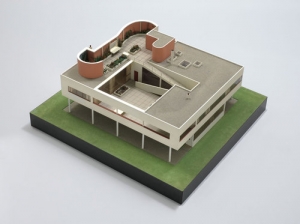
The Museum of Modern Art is busy organizing the largest exhibition on the groundbreaking architect Le Corbusier ever to be held in New York. Le Corbusier: An Atlas of Modern Landscapes is set to open on June 9 and run through September 23, 2013.
Born Charles-Édouard Jeanneret, Le Corbusier defined modern architecture during his career, which spanned five decades. Le Corbusier was not just an architect, but also an urban planner, a painter, a writer, a designer, and a theorist. Le Corbusier’s best-known buildings include the Palace for the League of Nations in Geneva, Villa Savoye in Poissy, France, the Swiss Building in Paris, and the Secretariat at the United Nations Headquarters in New York.
An Atlas of Modern Landscapes will be curated by the modern architecture scholar, Jean-Louis Cohen, and will cover Le Corbusier’s long and varied career. The exhibition will explore Le Corbusier’s contributions to architecture, interior design, and city planning. Works on view will include writings, photographs, sketches, watercolors, and models of some of Le Corbusier’s most renowned works.

A house built in 1952 by Frank Lloyd Wright for his son, David, has spent months on the brink of demolition. Fortunately, an anonymous buyer has purchased the Phoenix, Arizona home, ensuring its preservation.
The buyer paid $2.387 million for the house, which overlooks the picturesque Camelback Mountains. The former owners, Steve Sells and John Hoffman of the Arizona-based development company, 8081 Meridian, continued to raise the price of the house after purchasing the property for $1.8 million this past June.
The Frank Lloyd Wright Building Conservancy, an organization devoted to preserving the seminal architect’s legacy, facilitated the recent sale. After hearing that the former owners planned to level the house and split the lot to build new homes, the conservancy petitioned the city with the help of other organizations, asking that the house be granted landmark status. While three local government bodies approved the proposal, the City Council, which would be the deciding vote, repeatedly postponed their decision.
One of Wright’s most significant later works, the house in Phoenix features a coiled design similar to the one Wright employed for the Guggenheim Museum in New York. For years ago, Wright’s granddaughters decided to sell the house to a buyer they thought would preserve it. However, the house was sold again in June to 8081 Meridian putting it in danger of demolition.
While the house is in need of approximately $300,000 worth of restoration, the conservancy is helping to establish a nonprofit organization that will maintain and operate the house as well as oversee the renovation. The new owner plans to acquire landmark status for the house so that it can be made available for educational purposes on a limited basis.
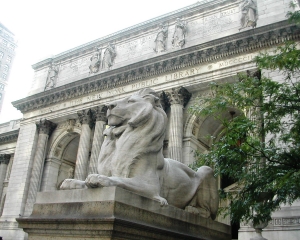
For the first time since announcing plans to renovate ten months ago, the New York Public Library has released a number of important project details. Located in a landmark building on Fifth Avenue in Manhattan, the New York Public Library’s $300 million renovation will be overseen by the London-based firm, Foster & Partners.
Architect Norman Foster announced plans to clear out the back portion of the library, which is now occupied by seven floors of books. The 1.2 million ousted volumes will be relocated to a storage space under Bryant Park as well as another facility in Princeton, New Jersey. Most of the exiled books are now available digitally and library officials purposely chose rarely requested books to be relocated. With the newly freed up space, Foster plans to create a four-level atrium with curving balconies filled with bookshelves and reading tables overlooking Bryant Park. It will be the first time since the library was built in 1911 that patrons will be able to see the park.
The library received a fair amount of criticism after announcing plans to renovate. Critics claimed that officials were not forthcoming enough with project details and that the relocation of books stood in stark contrast to the institution’s purpose. In response, Foster revised plans and 3.3 million of the library’s 4.5 million volumes will remain on site.
The busiest public research library in the United States, the New York Public Library will span 100,000 square feet after renovations are complete. Construction is slated to begin this summer and is expected to last until 2018.

Mary Griggs Burke, who built the most comprehensive collection of Japanese art outside of Japan, passed away on December 8, 2012 at her home in Manhattan. She was 96.
Burke’s collection, which she amassed over fifty years, featured thousands of artifacts including paintings, prints, sculpture, textiles, lacquerware, ceramics, and calligraphy. Worth tens of millions of dollars, her meticulously assembled collection spans five millenniums and includes early pieces from around 3000 B.C. to works of the 19th century A.D.
Burke was born in St. Paul, Minnesota in 1916, where she grew up in a Victorian mansion adorned with 18th century French objets d’art as well as a few important Japanese artifacts. After earning a bachelor’s degree in 1938 from Sarah Lawrence College and a master’s in clinical psychology from Columbia, Burke traveled to Japan in 1954. Japanese-influenced Bauhaus architect, Walter Gropius, who was designing a house for Burke, suggested the visit. Burke immediately fell in love with Japan and its art and returned to the country dozens of times throughout her life.
Burke began avidly collecting Japanese art in 1963. Her holdings eventually grew so vast that they required their own residence. Burke purchased the apartment adjacent to her own on the Upper East Side of Manhattan to house her collection; she also employed a curatorial staff and encouraged students and scholars to visit. In 2006, Burke announced that after her death her collection would be divided between the Metropolitan Museum of Art in New York and the Minneapolis Institute of Art. Burke served on the boards of many institutions, including the Met. At the time of her death she was an emeritus trustee of the museum.
|
|
|
|
|